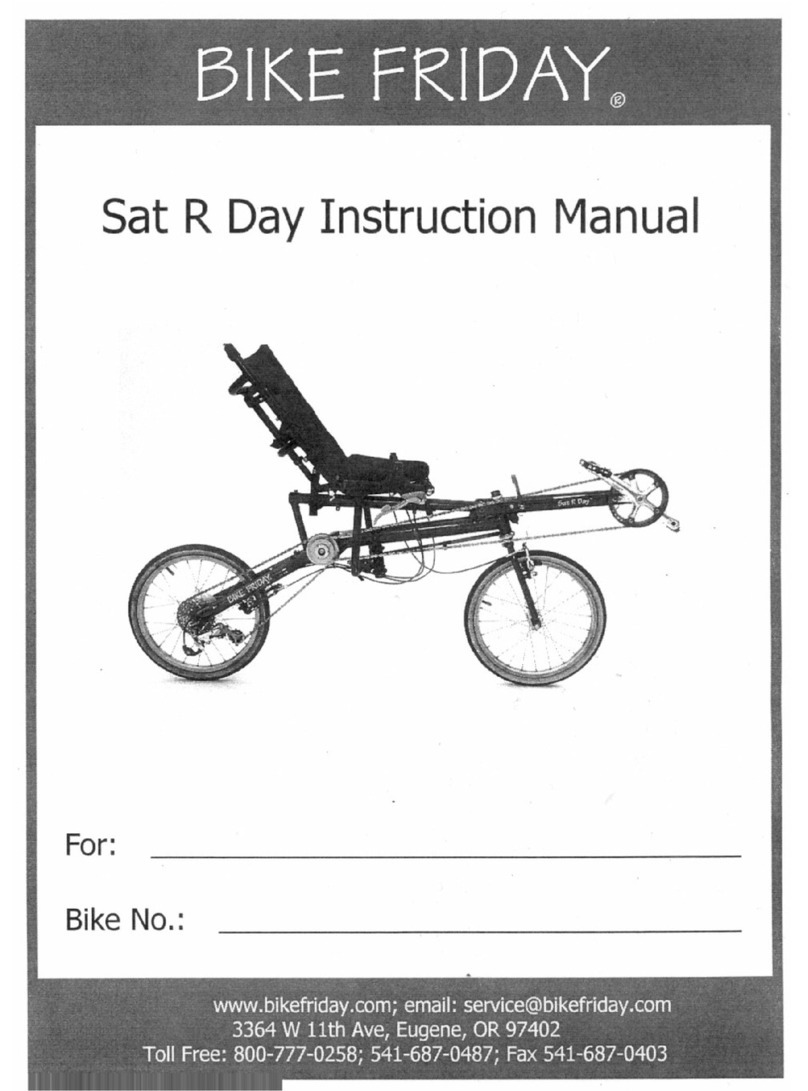d. Backlight: Hold to turn toggle on/off display backlight.
Tips for riding an e-assist bike:
● Before each ride, check that brakes are functioning correctly, and that all frame connections
and/or quick-release levers are secure.
● Start in a lower assist power setting (Setting 1 or 2), especially when the bike is new to you.
● Use only as much e-assist power as you need. This will help maximize battery life and keep
you aware of situations you encounter.
● Be aware of obstacles and loose surface (sand, gravel, etc.). You may be riding at faster
speeds than without electric assist, so give yourself extra time to stop or avoid these
conditions. The extra torque from the motor can make it easier to spin out in limited traction
situations.
● Be mindful of other cyclist, pedestrians, and vehicle drivers who may be surprised by the
rapid speed or acceleration of an e-bike rider.
● Charge batteries regularly to ensure maximum range is available for longer rides.
Troubleshooting:
If system will not power on:
- Check that all cable connections are fully seated, and free of moisture and corrosion.
(some are hidden inside controller bag)
- Ensure batteries are powered on and charged sufficiently.
If system powers on, but does not provide assistance:
- Set assist level at console to “1” - “5”
-Tap / to set assist level from 0-5
0 = no pedal assist power
1 = minimum pedal assist power
5 = maximum pedal assist power
- Check that motor cable connection is fully seated, and free of moisture and corrosion.
- Check that pedal-assist (PAS) magnet ring is in close proximity (1-3mm) to the
sensor. These components are mounted between the pedals/cranks. In some
situations, it may be possible for the magnet ring to get knocked out of position. The
PAS magnet ring should snug onto the bottom-bracket spindle toward the sensor, and
stay in position securely.
5





































